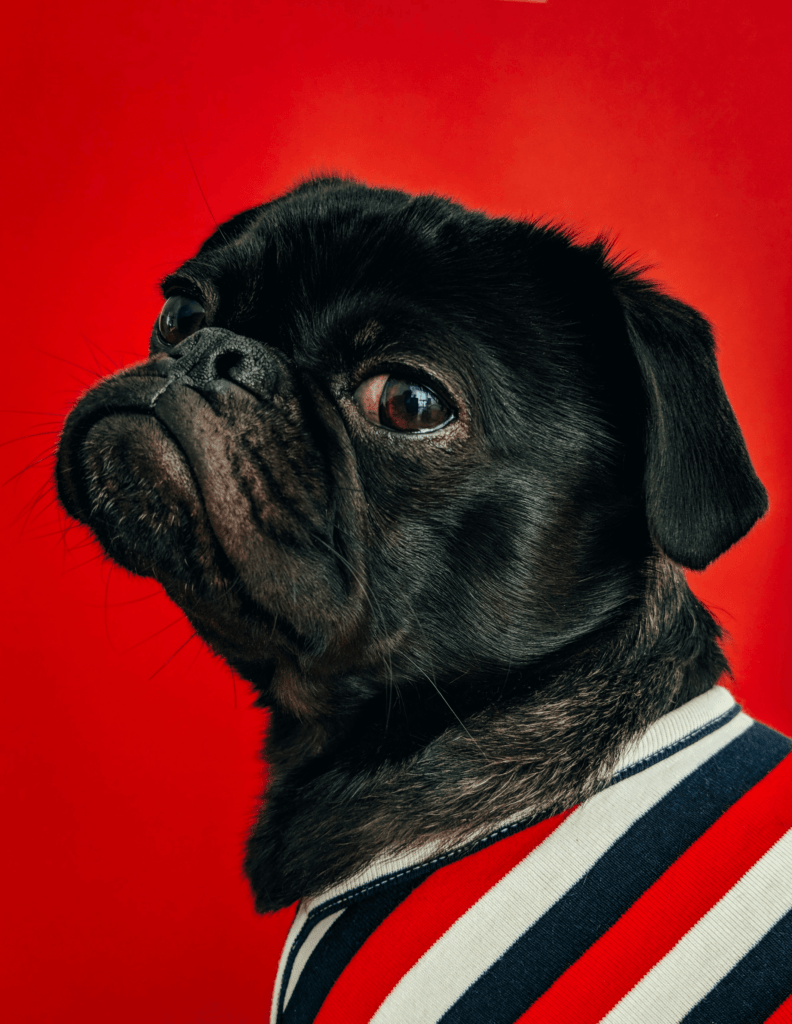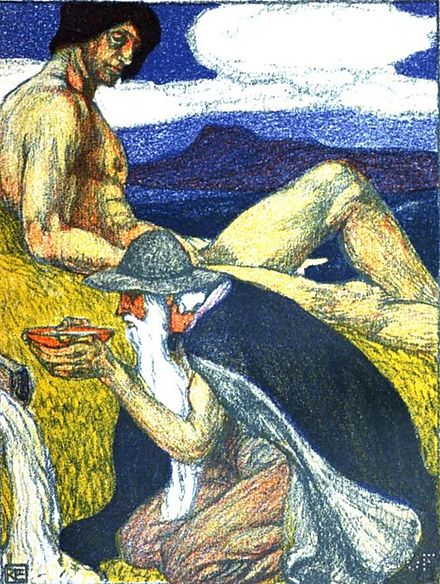This blog is part of a series about animals in dreams, also read:
Elephant in dreams: 3 archetypical implications
Animals in dreams hold deep symbolic meanings, reflecting both our instincts and shadow aspects. They often act as messengers, revealing truths we may not consciously acknowledge. In my Mindfunda courses, I explore the archetypes of animals and their roles in our dreams. Dreams about animals invite us to connect with our primal instincts, confront unresolved issues, and embrace transformation.
Here’s a recent dream that left me reflecting on the many roles dogs play in our lives—both waking and dreaming:
The Dream
I am at a lively party. Across the room stands an older woman, confident and charismatic, surrounded by a group of people. Her little black dog, a pit bull, trots over to me and suddenly bites my right hand. Shocked, I raise my voice to get her attention, asking her to discipline her dog. But before she can respond, the dog bites me a second time. Alarmed, I wake up, unsettled and wondering what this dream is trying to tell me.
#1. Dog as best friend
Dogs are universally known as symbols of loyalty and companionship. They are often seen as our protectors, guardians, and even our guides. One of the most famous depictions of this bond is the story of Argos, the loyal hound in Homer’s The Odyssey: “As they were speaking, a dog that lay there lifted his head and pricked up his ears. It was Argos, whom Odysseus himself had bred before setting out for Troy, but he had never had any enjoyment from him. In the old days, young men used to take him out to follow wild goats, deer, and hares, but now he was lying neglected in the absence of his master, on a heap of mule and cow dung that lay in front of the stable doors till the men should come and draw it away to manure the great close. He was full of fleas, and as soon as he saw Odysseus standing there, he dropped his ears and wagged his tail, but he could not get up to greet his master. When Odysseus saw the dog on the other side of the yard, dashed a tear from his eyes without letting Eumaeus see it, and said: ‘Eumaeus, what a noble hound that is over yonder on the manure heap: his build is splendid; is he as fine a fellow as he looks, or is he only one of those dogs that come begging about a table and are kept merely for show?’ ‘This hound,’ answered Eumaeus, ‘belonged to him who has died in a far country. If he were what he was when Odysseus left for Troy, he would soon show you what he could do. There was not a wild beast in the forest that could get away from him when he was once on its track. Now, however, he has fallen on evil times, for his master is dead and gone, and the women take no care of him. Servants never do their work when their master’s hand is no longer over them, for Zeus takes half the goodness out of a man when he makes a slave of him.’ So saying, he entered the well-built mansion and made straight for the hall among the suitors; but Argos passed into the darkness of death, now that he had seen his master once more after twenty years.”
In my case, my best friend is my husband. Naturally, when I woke up, I wondered if the dream might be a warning about this relationship. Could the bite signify betrayal? Dreams have a way of playing on our fears. Over breakfast, my husband and I discussed the dream, and he offered a simpler explanation: day residue. We often encounter people walking aggressive dogs like pit bulls in our neighborhood, so perhaps the dream reflected those encounters.
Still, the dream stayed with me, prompting me to consider deeper layers of meaning. Was this a hot sign repressed aggression? On both sides? Or only on my side? I must admit our fight have increased since we have reached middle age. I know I have an anxious attachment style (click to read more about it) and this dream made me more aware of it.
#2 Dog as Symbol of Death
In mythology, dogs are often connected to death and the underworld. Cerberus, the three-headed dog of Greek mythology, guards the entrance to Hades. His role is twofold: to prevent the living from entering and to ensure that the dead remain within.
James Hillman says in The Dream and the Underworld: “We capture the dog of night terror and turn straight into the day, muscles flexed, rising up from the bed, our projections reinforced by the dream” (p. 182). According to Hillman, we dreamers kidnap Cerberus every morning by ignoring our dreams and rushing straight into the day, where we remain stuck in the world filled with our own projections. I agree with him that our dreams can indeed have a corrective effect on our sense of well-being in the world, if we are open to them.” So in this respect, the dream dog tries to capture me and keep me into the symbolic world of dreams. There is something that I am missing, lacking in the waking world. What is the message? That I should bite more, fight more? Or that I should set my teeth into something? In that respect something happened about six months later. I went to the dentist and she told me yet another tooth had fallen into total decay. It had to be removed. We did not have a pleasant conversation and we did not really resonate. I have to say that dental visits are not on my top ten list of favorite things to do. This dream could be a literal nudge to take better care of my teeth: the dog as symbol of literal canines.
#3 Dog as Depression
I admit, it was not the first association I had with dogs. I always like them (except when they bite me twice in dreams): they are friendly, adorable, cuddly creatures. But James Hillman says in his book Animal Presences:
“In depression, the mind goes on a hunt to find a cause, digs up old bones that have been chewed many times before—past sins, omissions, and regrets. Regurgitations as meditations and one feels oneself to be ugly and smelly, and full of blame. Like a dog, the mind chases its own tail, obsessively seizes on a misery, shakes it like a terrier, and won’t let go—compulsive repetitions of complaint, like a dog barking and barking long after the postman has passed” (p. 152-153).
I must admit, this interpretation hit close to home. There are times when I get lost in self-criticism, dwelling on mistakes or injustices. I recently written about this: Calming the Chitter-Chatter (click to read more). The dog’s bite in my dream might reflect my tendency to “bite myself,” metaphorically speaking, by revisiting old wounds.
This biting imagery also reminded me of the Corascene dog described in Hali the Arabian’s Lumine de Lumine:
“Take the Corascene dog and the bitch of Armenia. Put them both together and they will bring thee a sky-coloured whelp.”
The Corascene dog represents an untamed, volatile energy—raw and fiery, much like sulfur in alchemy. Its counterpart, the Armenian bitch, embodies the grounding, nurturing energy of mercury. Together, they produce the “sky-coloured whelp,” a symbol of transformation, purity, and enlightenment.
The “bite” of the Corascene dog mirrors the alchemical process: an initial, often painful confrontation with unbridled energy that serves to break down the old and prepare for renewal. In this sense, my dream could be seen as a call to transformation—an invitation to confront my instincts and harness them in the service of growth.
This dream has left me reflecting deeply. Am I being asked to let go of old patterns? To embrace the fiery energy of change and emerge with renewed clarity? Transformation, like the alchemical process, is rarely smooth. But just as the Corascene dog’s bite can initiate a profound shift, perhaps my dream is urging me to take that first bold step toward renewal.
Dogs, as archetypes, are complex creatures in dreams. They can embody loyalty, aggression, protection, or even depression. By exploring their symbolic roles, we deepen our understanding of ourselves and the challenges we face.
So, next time a dog appears in your dreams, ask yourself: Is it a friend or foe? A guide or a warning? The answer, as always, lies within the dreamer’s heart.
Literature
Hillman J. (1979) The Dream and the Underworld. Harper Perennial.
Hillman J. (2008) Animal Presences. Spring Publications
Homer. (1996) The Odyssey (R. Fagles, Trans.). Penguin Classics. (Original work published circa 8th century BCE).
Vaughan, Thomas (1651) Lumen de lumine, or, A new magicall light discovered and communicated to the world by Eugenius Philalethes Retrieved January 10, 2025


